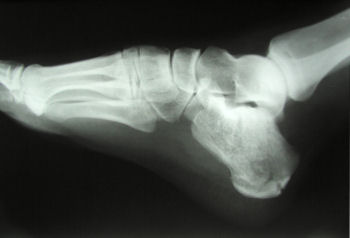> Continuous Improvement Articles
How Can Healthcare Be So Good and So Bad?
Over the last few days, I’ve got to experience both the good and the bad of the healthcare system in the US. You see, my daughter was a bit over-adventurous with her parkour in the playground and broke her ankle trying to leap from a ladder to a set of monkey bars.

(Not really my daughter’s foot, and not really a broken ankle)
So, the bad first. It is a nightmare to get approval for specialists. You need to get referrals, authorizations, check with insurance, and schedule appointments right away to make sure you don’t lose a time slot, and then cancel and shift them around once the paperwork is in order. There’s an amazing amount of waste for all parties involved. Long explanations, multiple calls, research, and so on. Fortunately for me, it was my wife who did all that legwork. She, of course, did not feel as fortunate.
It all comes down to a supplier network that is competing with each other. The insurance company doesn’t want to pay for a specialist. Primary care doctors don’t want to increase their potential liability by not taking every precaution they can think of. And we, as the patient/consumer, want to get the care we think we’ve paid for in our premiums each month.
Now, in most business relationships, there is some competition. Suppliers and manufacturers both want to get the biggest slice of the profit pie, but the end goal is the same. Every supplier up and down the value stream agrees that the customer buying more is better than the customer buying less.
Not so in health care. When a patient walks in the door of a doctor’s office for anything but preventative medicine, the physician wins, but the insurance company loses. Hard to picture a supply chain that is more adversarial.
Now, on to the good. My daughter’s boot is a marvel. She’s going to have it on for 4-6 weeks, and yet the materials aren’t bothering her despite wearing it 24-7. It adjust with straps and Velcro, but then has a pump that applies the final even bit of pressure. Someone put their ingenuity to use to come up with that contraption. Plus her crutches are lightweight, sturdy, and feature quick adjustment points. The switch from wing nuts and wood on older crutches to these push button quick releases is straight out of the SMED 101 manual.
So, back to the bad. I’m curious if anyone can think of another type of transaction where a consumer pays two competing entities to battle it out about how to provide a service. The closest other example I can think of is when hardware and software techs blame each other, but during the initial purchase, both companies would have won. So are there any other win-lose situations at the moment of purchase for a consumer?
Note: The foot xray is courtesy of user “JoJo” on Wikimedia Commons.
2 Comments
Jeff Hajek · December 10, 2010 at 8:31 am
John,
Exactly. It is the system that is broken, not the players. And in healthcare, the system pits the players against each other. The safety net of insurance allows people to be less diligent about personal maintenance, but that also increases their need to use the insurance. Doctors want to be prudent, but the insurance companies want to save money. Doctors practice ‘defensive medicine’ to insulate against lawsuits, but that raised the costs for all their patients.
Anytime goals are not aligned, results will suffer for at least one party, and probably all.
Thanks for commenting.
Jeff
John Hunter · December 10, 2010 at 8:15 am
A hundred years ago you would have the same very high variation is output/experience from poorly run systems in many organization. Poorly run system don’t necessarily give horrible results all the time. Often if you throw HUGE amounts of money at very poorly run system to can get some good outcome and huge variation is results. Health care in the USA seems largely to be producing those kind of results. Take a very poor system through absolutely enormous amounts of money at it and some results will be good. Instead of focusing on good management improvement efforts and fixing systemic problems the current efforts are largely around throwing money at the broken system.
Now health care is huge – consuming over 17% of GDP probably. Within that there are large numbers of very good things being done. But overall it is just throwing money at very bad systems I think. And that explains why some results can be good but overall the system is just very poorly run and so no matter how much money you throw at it the results will never be good (reducing variation, reducing costs, getting better results for less costs…).
Today, if a manufacturer tried to just throw money at problems and retain management practices used in 1900 they would almost certainly go out of business nearly immediately.